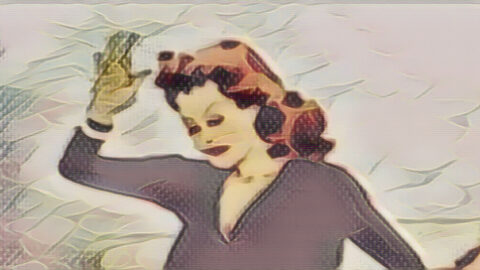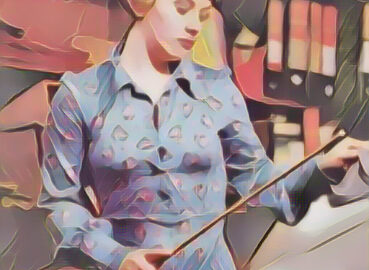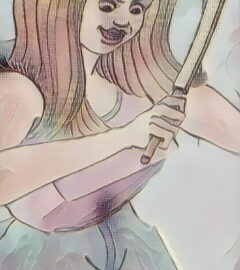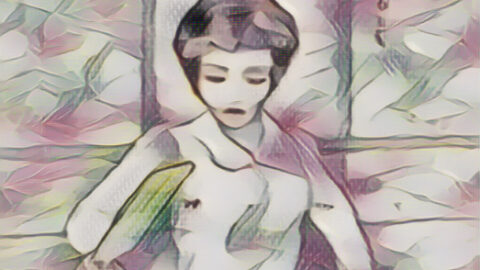(gap: 2s) My mother, Margaret, was a lady of unwavering principle and gentle heart, yet she held steadfastly to the belief that discipline was the cornerstone of a proper upbringing. When her own mother departed this world, Margaret assumed the care of her younger sister, Susan, with a sense of duty that was both admirable and daunting. In those days, it was not unusual for the eldest to shoulder such responsibilities, and Susan, like many a younger child, soon became acquainted with Margaret’s firm but affectionate guidance. The implement of correction was a solid wooden hairbrush, which, over the years, came to represent both authority and a peculiar sort of familial affection within our home.
I, too, became intimately familiar with that hairbrush. On several occasions, I found myself summoned to Margaret’s side, whereupon she would seat herself with an air of solemnity and beckon me to her lap. The air would grow still, and I would feel the coolness upon my skin as she administered a series of brisk, deliberate spanks with the hairbrush. Each stroke was delivered with care—never in anger, but always with the intention of imparting a lesson. The sharp sound of the hairbrush meeting its mark would echo through the room, and a warm, tingling sensation would remain long after the final stroke. Susan, ever the attentive observer, would often witness these proceedings, her eyes wide with a mixture of concern and relief that she was not the one being corrected.
As I advanced in years, Margaret determined that I had outgrown such childish punishments. The era of the hairbrush drew to a close, replaced by more mature forms of discipline. Yet, the memory of those spankings lingered—not as a source of bitterness, but as a reminder of the boundaries that shaped my early years. Each spanking was not merely a punishment, but a moral lesson, teaching me the value of obedience, respect, and self-control.
School, however, was an entirely different realm. My primary school had never resorted to corporal punishment, but my secondary school was a relic of a sterner age. The cane was employed with alarming frequency, and even the most minor transgression could result in a summons to the Head of Year’s office. The mere mention of the cane was sufficient to quell even the most spirited mischief.
The ritual was always conducted with the utmost formality. At break-time, a line of boys would assemble outside the Head of Year’s study, each clutching a punishment slip and wearing an expression of grave apprehension. The door would remain slightly ajar, allowing those waiting to observe the proceedings within. One by one, we would enter, state our offence, and bend over, bracing ourselves for the sting of four or six well-placed strokes. It was considered a point of honour to endure the punishment in silence, but every boy emerged with eyes glistening and hands pressed firmly to his smarting person.
I recall my first caning with a clarity that has never diminished. It seemed to me a most grievous injustice. I had devoted considerable effort to a science assignment on the solar system, filling the pages with careful illustrations and vivid descriptions. Margaret was so impressed that she set it aside for my father to admire, but in the morning, it was inadvertently left upon the coffee table. When I arrived at school, my satchel was empty, and my explanation was met with indifference. The teacher, unmoved, wrote out a punishment slip and dispatched me to my fate.
Standing in that queue, my heart pounded within my chest. I had witnessed the aftermath of the cane before—red stripes displayed with a curious mixture of pride and discomfort in the changing rooms—but now, as the sound of each stroke rang out, a cold dread settled over me. My turn arrived all too soon. The Head of Year, a man of formidable aspect, gave me no opportunity to plead my case. I bent over, stretching as far as I could, and gripped my knees in anticipation.
The first stroke landed with a crack that seemed to reverberate through the very air. For a moment, I felt only astonishment. Then, as the second, third, and fourth strokes followed in swift succession, a searing pain blossomed across my person, as though a swarm of angry bees had descended upon me. I bit my lip, determined not to utter a sound, but my eyes stung with unshed tears. Each stroke was a lesson in humility, a reminder that actions have consequences, and that one must bear them with fortitude.
When it was over, I stumbled from the office, clutching my burning self and blinking back tears. The pain was fierce and unrelenting, a hot, throbbing ache that made it impossible to sit comfortably for the remainder of the day. Yet, beneath the pain, there was a peculiar sense of pride—I had endured the ordeal, just as countless boys before me had done. The caning was not merely a punishment, but a moral lesson, teaching me the importance of responsibility and perseverance.
At home, I hastened to my room and examined the damage in the mirror. Four vivid red stripes stood out against my pale skin, perfectly parallel and evenly spaced. Margaret, upon seeing them, shook her head in sympathy and fetched a tin of ointment. Susan, ever inquisitive, peered over her shoulder, her eyes wide with a mixture of fascination and concern.
Margaret offered to write a letter to the school, but I declined. I understood that to complain would only exacerbate matters. In those days, a boy was expected to accept his punishment with dignity, and to seek his mother’s intervention was the surest way to invite the scorn of both teachers and peers. Instead, I accepted Margaret’s gentle ministrations and Susan’s quiet sympathy, feeling a curious blend of shame and comfort. Each caning, like each spanking before it, was a lesson in courage and self-restraint.
It became something of a ritual. Each time I returned home with fresh stripes, Margaret would inspect the marks, her touch gentle and soothing as she applied ointment to the angry welts. Susan, if present, would offer words of encouragement or, on occasion, a light-hearted remark to ease the tension. The pain, though sharp at first, always faded in time, leaving behind only faint bruises and a lingering sense of having overcome another trial. Each episode was a moral lesson, reinforcing the values of endurance and composure.
There was one occasion, however, that stands out above all the rest. On this day, I received not four, but six strokes—a punishment reserved for the gravest offences. The marks were more dramatic than ever, and I felt a deep embarrassment at the thought of displaying them to my young aunt. When Margaret announced, “He has been caned again,” Susan’s eyes sparkled with mischief. “Let us see, then!” she declared, her voice full of playful challenge.
I hesitated, my cheeks burning with shame. Susan, with her irrepressible grin, coaxed and cajoled until at last I relented. With a deep breath, I turned and lowered my trousers, feeling the cool air upon my sore skin. The room was filled with a chorus of gasps and exclamations as they surveyed the fresh stripes. “My word, they have outdone themselves this time!” Susan remarked, her tone a curious blend of sympathy and amusement.
Margaret, ever practical, set about tending to my wounds. Her hands were gentle, her voice soft and reassuring as she dabbed ointment on each mark. “You shall be right as rain in no time,” she promised, her eyes full of motherly concern. Susan, meanwhile, could not resist a final jest: “You know, you are becoming quite the expert at this. Perhaps you should start a club for caned boys!” Despite myself, I laughed, the sound mingling with the sting and the comfort of their presence. Even in this, there was a lesson—a reminder that adversity is best faced with good humour and the support of family.
As the days passed, the pain faded, but the memory of that caning lingered. It was not merely the physical discomfort that remained, but the lesson it imparted. Life, I learned, is not always just. Sometimes, despite our best efforts, we are punished for things beyond our control. Yet, it is how we respond to these trials that shapes our character. Each spanking and caning was a moral lesson, teaching me to accept adversity with grace and to persevere in the face of difficulty.
Looking back, I see now that those moments of discipline were not acts of cruelty, but of love. Margaret’s firmness, Susan’s teasing, and the rituals of care that followed each punishment taught me resilience, humility, and the importance of family. The sting of the cane was sharp, but it was the warmth of their support that truly endured. Each spanking, each caning, was a lesson in virtue, imparted with care and affection.
In the end, the spankings and canings of my youth became more than mere punishments—they were lessons in courage, endurance, and forgiveness. They taught me that pain, though real, is fleeting, and that laughter and love can transform even the most difficult moments into memories worth cherishing. And so, as I look back on those days, I do so not with bitterness, but with gratitude for the lessons learned and the bonds that were strengthened in the sunlit rooms of my childhood.


























































